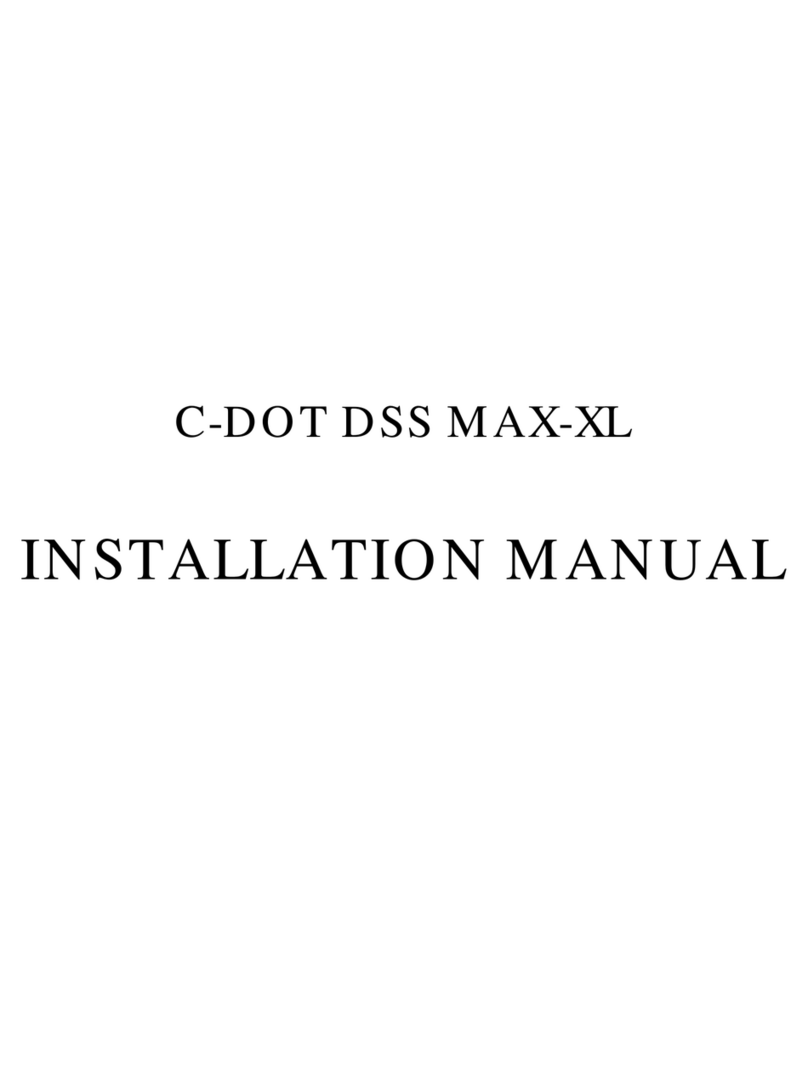
6 C-DOT NSE
Chapter 2.
Product Description
2.1. SYSTEM ARCHITECTURE
The C-DOT Network Synchronization Equipment (NSE) consists of a PC type
cabinet which houses duplicated controller and PLL (NCP) cards, duplicated
input/output interface (NIO) cards, and one display card, keyboard card and mother
board. It has the provision to mount two oven-controlled crystal oscillator 8 (OCXO)
required for level 2 operation. The controller card has a software controlled digital
Phase Locked Loop (PLL), microprocessor and related memory, output clock
interface and the display and keyboard interface. The NSE input/output card has
the various types of input interfaces to take in the network clock. It extracts clock
from the input digital trunks and provides standard G.703/10 interfaces for the
output clocks.
One NCP card and one NIO card form a self-contained security block. It can work
with the other copy of these two cards in active/standby mode. Output to/from these
cards are connectorised on the motherboard. The user interface panel indicates the
presence and absence of input clocks/trunks and the status of the PLL in the cards
and the general card status. Each controller card provides two ACIA links, one of
which is used for communication with the mate while the other is used to connect a
VT-220 terminal for remote operations.
Fig. 2.1 and Fig. 2.2 show the equipment front panel and back panel details.
2.2. INPUT CLOCK SELECTION
The input reference clock selection can be automatic or manual. On power on or
reset, the NSE comes up in the automatic mode, wherein it selects one of the input
clocks according to a fixed hardwired priority. The order of priority is CLK0, CLK1,
CLK2. If none of clocks are present or available for selection, then the NSE goes
into the free run mode. The operator can override this selection by going to manual
mode and selecting a clock using the keyboard. If the input clock is present, the
LED corresponding to it will glow green. The LED corresponding to the selected
reference blinks once in 2 seconds (1Hz Freq.).
It may be noted that a clock used as Reference to NSE shall always be taken from a
higher level exchange.




























